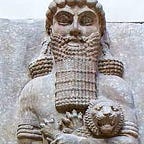Moai Statues: A Scientific Analysis of the Enigmatic Giant Statues
Introduction:
The Moai statues on Easter Island (Rapa Nui) are among the most iconic and enigmatic archaeological artifacts of humanity. These colossal stone sculptures were carved by the Rapa Nui people between 1250 and 1500 AD and offer significant insights into the island’s culture and history.
Characteristics of the Statues:
Moai statues stand at an average height of 4 meters and weigh 12–20 tons. Some statues can reach up to 10 meters in height and weigh 80 tons. The sculptures are typically carved from volcanic tuff and depict stylized human heads. They have large eyes, noses, and mouths, and their hands often rest on their stomachs.
Construction and Erection:
The exact methods employed to transport and erect the Moai statues remain a subject of debate among archaeologists and anthropologists.
- The prevailing theory: The statues were moved using a technique known as “walking statues.” In this method, wooden logs were placed under the statue, and it was slowly dragged to its destination using ropes and human power.
- An alternative theory: The statues were carved in different parts of the island and then transported to their final locations.
- A final theory: The statues were carved vertically and then erected.
The exact method of erecting the Moai statues is also unclear, but ramps and wooden platforms are likely to have been used.
Meanings and Functions:
The meanings and functions of the Moai statues are still not fully understood. Some researchers believe that the statues represent ancestors. Others argue that they depict religious or political figures or were used as symbols of fertility and abundance.
